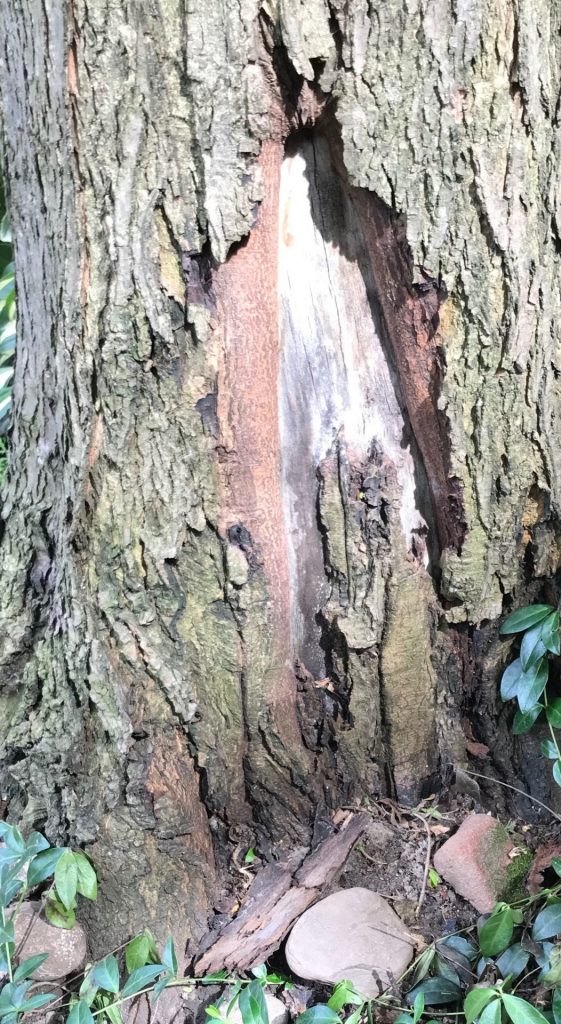
The Autumn Blaze maple tree in my backyard is shedding bark at its base. There is no obvious evidence of insects. This started in 2020. 3 years ago two neighbours had trees taken down because of their bark loss. Does a treatment exist that might help it recover? Thank you!
Thank you for contacting Toronto Master Gardeners and congratulations on recognizing this issue and trying to help your tree. Early recognition can help take corrective measures before a tree becomes a hazard or before it is necessary to remove it .
Southern Ontario winters, with their thaws, followed by immediate returns to deep freeze, can cause tree trunks to split. Maples are unfortunately prone to these splits because they are thin barked trees. This type of bark-splitting is thought to result from very cold temperatures on sunny winter days and is often associated with southwest exposure. On bright sunny days the southwest side of the tree heats up, absorbing the heat of the sun. When the sun sets or goes behind a cloud, there is a sudden freezing of the warm tissue and the water in it . This “sun scald” results in the death of the exposed bark. The result is a vertical fissure down the center of the tree trunk, causing strips of bark to peel off, exposing the tree’s inner wood. These cracks may cause stress for your tree and provide a point of entry for pests and diseases.
Other considerations : Do you know if there has been any mechanical ( e.g.lawnmowers, whipper snippers) or wildlife damage? Do you see birds looking for insects in the crack or tear of the bark? Do you see any holes in the bark? Beetles bore holes in the bark to the cambium layer and lay eggs. Then other wildlife looking for them, may peel and damage the bark further. Any wound can become a pathway for diseases, insects or decay .When a tree receives a trunk wound that penetrates the cambium layer it can interfere with the movement of water and nutrients. Are the leaves and branches doing well?
Damage from sunscald may eventually heal ( bark may not grow back but an otherwise healthy tree may form “wound wood” , essentially a callus that forms around the wound edges to prevent further injury or disease ). Encourage health by fertilizing in spring , if needed, proper pruning , giving adequate irrigation in hot , dry weather . Do not fertilize in the fall as that encourages new growth which is more susceptible to splitting . Do not remove the bark around the crack or paint or treat it .
While we will hope for healing , given the value that trees add to our properties and the consequences of not maintaining damaged trees, you may wish to consult with a certified arborist . The Ontario chapter of the International Society of Arboriculture’s website is where we usually direct people to help you to locate a qualified arborist in your area: https://www.isaontario.com/ but when I checked the site , I found that their ‘Find an Arborist’ “ icon also says ‘Coming Soon ‘ so perhaps your neighour could say if they recommend the arborist who helped remove their trees.
Thank you for contacting us and thank you for noticing and caring about your tree.

